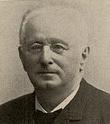Aconite [Acon]
Deathly paleness of face and shuddering; the part first swells and then assumes a blackish color; sleeplessness and restlessness; chilliness from least uncovering; sweat cool in palms of hands; coldness of feet up to malleoli, with sweat on toes and soles of feet.
Arnica [Arn]
Hard, hot and shining swelling of parts affected; gangrene follows contused wounds; thirst before fever; pain in periosteum of all the bones; pain in cartilage of ears, as if contused; swelling of nose, with feeling as if from ulceration of nostrils; tendency to boils and carbuncles.
Arsenicum [Ars]
SENILE GANGRENE; ulcers extremely painful or entirely insensible, with elevated edges, secreting a bad, watery foetid ichor; hard, shining, burning swelling with bluish- black, burning vesicles, filled with acrid ichor (<) from warmth, (<) from cold; extreme restlessness; gangrene accompanied by foetid diarrhoea; great weakness and emaciation; numbness, stiffness and insensibility of the feet; general coldness with parchment-like dryness of the skin, followed by heat.
Asafoetida [Asaf]
Dark-red and hot swellings; bright-red appearance of the wounds which are sensitive to touch; coldness and dryness of skin with rapid pulse.
Aurum [Aur]
Gangrenous diseases with oedematous swelling of the parts; very sensitive to cold, (<) at night, disturbing sleep; low- spirited, with suicidal ideas.
Belladonna [Bell]
Fiery redness of swelling, even erysipelatous; dry, hot skin, thirst and headache, erysipelatous indurated swellings which mortify, accompanied by glandular swellings; secretions of bloody ichor.
Bromium [Brom]
HOSPITAL GANGRENE; death of the edges of the wound; cancerous ulcer in face; stony-hard swelling of glands, especially on lower jaw and throat; decayed teeth and gums; foul breath; much prostration and emaciation; psoric constitution (McFarlan recommends its internal use and applies the fuming destructive liquid externally to remove the sloughs).
Carbo-veg [Carb-v]
Senile gangrene, HUMID GANGRENE IN CACHECTIC PERSONS whose vital powers are exhausted; great foulness of the secretions; great prostration; sepsis; indifference; fainting after sleep, while yet in bed, morning; no restlessness.
China [Chin]
After profuse and frequently repeated haemorrhage, with coldness of the extremities or of the whole body, with pale and clammy face; the parts around the wound become soft, blue and swollen; bedsores in people who are much debilitated from excessive discharges.
Conium [Con]
Gangrene from contusions; glands swollen indurated; feeling of heat in the whole body; perspiration all over; depression of spirits.
Crot. [Crot-h]
Gangrene, skin separated from muscles by a foetid fluid; black
spots with red areola and dark, blackish redness of adjacent tissues; sluggish circulation, low fevers, CARDIAC DEBILITY, feeble pulse, faintness, torpor of mind and quiet indifference; traumatic gangrene; old scars open again.
Euphorbium [Euph]
GANGRENE FOLLOWING GASTRITIS OR ENTERITIS, temperature continually falling; inflammation and swelling, followed by cold gangrene; torpor; insensibility of parts affected; chilliness and shuddering over whole body; gangrene senilis.
Lachesis [Lach]
Gangrenous blisters, bluish or black-looking blisters; vesicles appearing here and there, increasing in size, with violent itching and burning, as if the flesh would be torn from the bones; swelling and inflammation of the part, with violent pains, dry mouth, dry skin, constant fever and thirst; tingling in the part, with heat and numbness, skin cracked and deep rhagades; coldness of the part, as if ice were in contact with it; itching pain and painful spots appearing after rubbing, with dark-blue borders and dry scurfs. GANGRENE INJURY (Crotal. has similar symptoms, which must be well differentiated.)
Laurocerasus [Laur]
Gangrene of the penis, internally and externally, swelling of the glands of the neck; pains aggravated by hot or cold applications.
Mezereum [Mez]
Burning of the internal parts, with external chilliness; sensitiveness to cold air; pulse full and hard.
Muriatic-acid [Mur-ac]
Putrid gangrenous ulcers on the lower extremities; great sensitiveness to dampness; pulse weak and slow; chilliness and shuddering; oedema of the part.
Phosphoric-acid [Ph-ac]
Senile gangrene.
Secale [Sec]
DRY GANGRENE of the extremities, the parts are dry, cold, hard and insensible, of a uniform black color and free from foetor. Large ecchymoses, blood-blisters on the extremities, becoming gangrenous, black, suppurating blisters. The limbs become pale, cold and shrivelled, or cold and lead-colored, losing all sensibility; (<) from cold applications.
Sulphur [Sulph]
Bedsores, with gnawing pains; red, shining swelling of the toes; putrid ulcers, turning to gangrenous sores; sloughing phagedaena.
Sulphuric-acid [Sul-ac]
TRAUMATIC GANGRENE; blue spots like suggillations; bedsores; haemorrhages from wounds; dark pustules; deathly pale face; subjective sensation of trembling.


